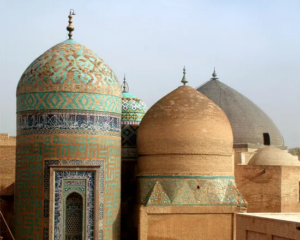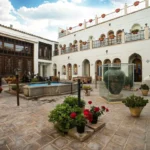Understanding the nuances of Iranian culture and navigating its unique aspects is essential for a fulfilling travel experience. Iran, with its rich history and diverse cultural practices, presents a fascinating blend of traditions, customs, and etiquette that can both enchant and challenge visitors. From distinguishing between Persian and Arab identities to grasping local dining customs and appreciating the warmth of Iranian hospitality, each facet of Iranian life offers valuable insights. This guide aims to provide you with a comprehensive overview of key aspects to enhance your understanding and appreciation of Iran, ensuring a more immersive and respectful journey.
1. Understanding the Persian-Arab Difference
While Persians and Arabs both follow Islam, their cultures, languages, and histories are very different. Persians speak Farsi, a distinct language with deep roots in the ancient Persian Empire, whereas Arabs trace their lineage to the Arabian Peninsula and primarily speak Arabic. The confusion between these two groups often stems from their shared religion, but it’s important to recognize that Islam is a religion, not an ethnicity. In Iran, the dominant form of Islam is Shia, which contrasts with the Sunni branch practiced by most Arabs. This religious difference has shaped Persian culture, traditions, and even their calendar. For example, the Persian New Year, Nowruz, is a major celebration with roots in Zoroastrianism, Persia’s ancient pre-Islamic religion, and is not observed in Arab countries. Understanding these differences will help you appreciate Iran’s rich culture and avoid common misconceptions during your visit.
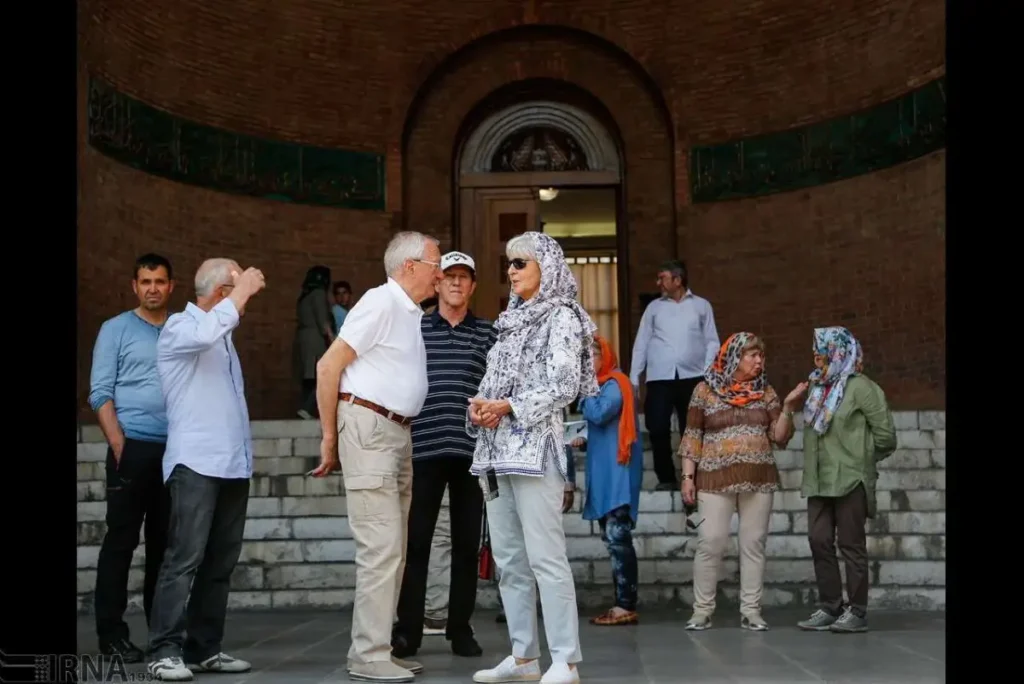
2. Iranians Are Kind to Americans, Beyond Politics
If you’re an American planning to visit Iran, you might be concerned about the political tension between the two countries, but this doesn’t reflect how ordinary Iranians feel about American visitors. Despite the rocky relationship between the governments since the 1979 Revolution, Iranians generally separate politics from personal relationships and have no ill will toward American citizens. Known for their warmth and kindness, Iranians extend their legendary hospitality to all tourists, including Americans. From enjoying meals in local homes to exploring bustling bazaars, you’ll find that Iranians are genuinely interested in getting to know you and sharing their culture. Many American travelers have spoken highly of their experiences in Iran, noting how safe and welcomed they felt throughout their trip. So, rest assured, when you visit Iran, you’ll be met with open arms and genuine hospitality.
3. Understanding Iranian Currency
Understanding the Iranian currency is essential for a smooth travel experience. The official currency is the Rial, but due to its decreased value, prices are often quoted in Toman. One Toman equals 10 Rials, so to simplify, you can drop one zero from the Rial amount to convert it to Toman. For example, 50,000 Rials is equivalent to 5,000 Tomans. Locals generally refer to prices in thousands of Tomans, omitting the additional zeros for convenience.
4. Currency Exchange and Payment Methods
For payment in Iran, be aware that international credit and debit cards like Visa and Mastercard are not accepted. Instead, you will need to use cash or obtain a travel debit card. You can exchange money at the airport, banks, or exchange offices, but it’s advisable to avoid street exchanges to ensure you get a fair rate. Here are some tips for managing your money in Iran:
- Bring USD or Euro Cash: It’s better to bring USD or Euro cash rather than other currencies, as the exchange rate for these is generally more favorable.
- Avoid Changing Money at the Airport: The exchange rate at the airport is typically higher than in the city. To get a better rate, change your money in the city instead.
- Don’t Exchange Too Much Money at Once: Be cautious about exchanging large sums of money. It’s advisable to exchange only what you need for immediate expenses.
- Exchange Rates in Big Cities: Larger cities like Mashhad, Tehran, Shiraz, and Isfahan usually offer better exchange rates compared to smaller cities. For the best rates, consider changing money in Tehran or Mashhad.
For detailed information about money exchange in Iran, refer to the article “How to Exchange Money in Iran as a Tourist: A Comprehensive Guide.”
5. Dress Code for Visitors
Iranian culture is deeply rooted in traditions and religious practices, making it essential for visitors to respect local customs. Women are required to wear the hijab and dress modestly in public, which includes wearing loose-fitting clothing that covers the arms and legs. Although the hijab might feel restrictive at first, it becomes a natural part of daily life. Men should also dress conservatively, avoiding shorts and opting for long pants and shirts. Public displays of affection, such as holding hands or hugging, are generally discouraged between non-relatives. Additionally, be mindful of gestures that may be considered impolite, such as the thumbs-up sign, which can sometimes be interpreted as offensive. Understanding and adhering to these customs not only shows respect but also helps in blending seamlessly with the local culture and enhancing your travel experience.
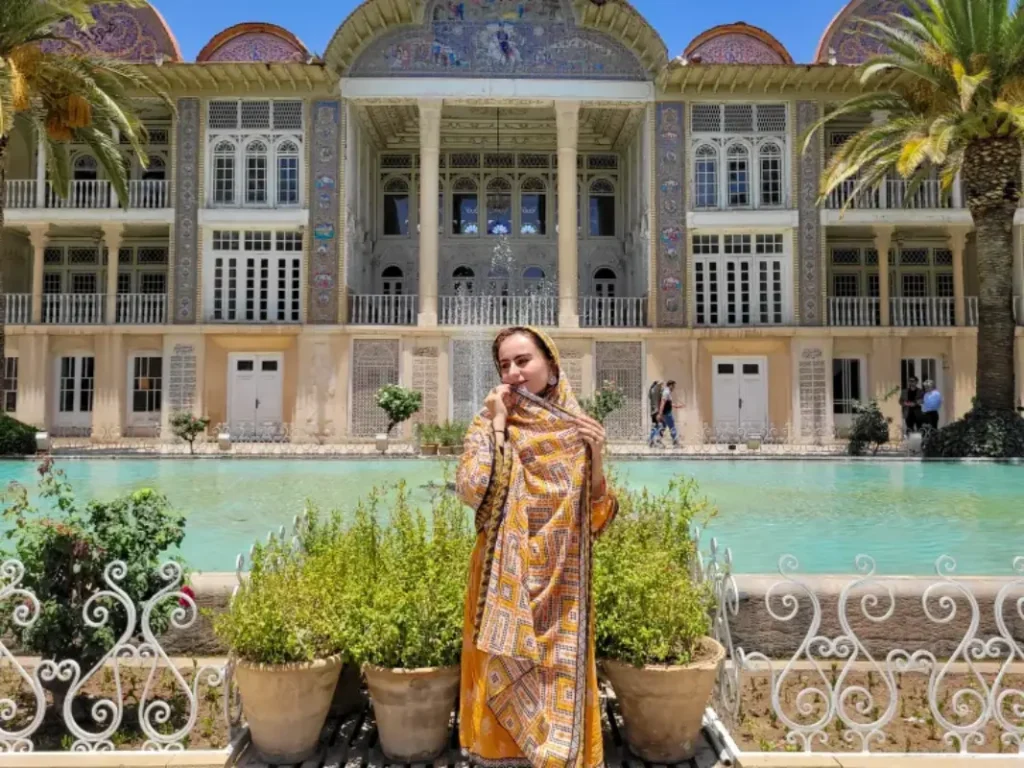
6. Visa Requirements
Obtaining a visa for Iran requires some planning, as the process varies depending on your nationality. Most visitors will need to apply for a tourist visa before arrival, although some nationalities can obtain a visa on arrival (VOA) at major airports. Travelers from countries like the US, Canada, and the UK face additional restrictions and typically need to arrange their visa through a travel agency or by joining a guided tour. The VOA system simplifies the process for many, but it’s crucial to verify current regulations and requirements prior to travel. The visa application process involves providing detailed personal information and may require an invitation letter or proof of accommodation. It’s advisable to start this process well in advance of your travel dates to ensure a smooth entry into the country.
7. Language and Communication
Farsi (Persian) is the official language of Iran, and while some Iranians, especially in urban areas, speak English, it is not universally understood. This language barrier can pose challenges but also offers an opportunity to engage more deeply with the local culture. Carrying a phrasebook or using a translation app like Google Translate can be incredibly useful. Learning a few basic phrases such as “hello,” “thank you,” and “please” can go a long way in building rapport and demonstrating respect for the local culture. Many Iranians are eager to help and practice their English, so don’t be shy about initiating conversations. Being open to language exchange can also provide a richer travel experience and foster meaningful connections with locals.
8. Walking Long Distances to Enjoy the Cities
When traveling in Iran, you’ll find that walking is a big part of the experience, whether you’re wandering through ancient sites or exploring lively bazaars. Since you’ll be on your feet a lot, choosing the right footwear is essential for a comfortable and enjoyable trip. In cities like Tehran, Isfahan, and Shiraz, you’ll want shoes that support long hours of walking. Opt for comfortable, well-cushioned walking shoes or sandals that offer good arch support. These will help prevent blisters and keep your feet happy as you navigate through streets and historic landmarks.
A lightweight, comfortable backpack allows for easier mobility and navigation through cities, historical sites, and uneven surfaces. Packing light helps avoid the hassle of managing large luggage and ensures you’re prepared for both urban exploration and rural travel. Prioritize essentials and consider packing versatile clothing to adapt to varying weather conditions and activities. And if you’re planning to visit more rugged areas or go hiking, it’s wise to invest in a pair of sturdy hiking boots.
9. Exploring Persian Cuisine Beyond Kebabs
Persian cuisine is incredibly diverse and extends far beyond the well-known kebabs. Iranian food offers a rich variety of flavors and ingredients, including savory stews like Ghormeh Sabzi, a herb-based dish that is a staple of Persian cooking, and Fesenjan, a rich and tangy stew made with walnuts and pomegranate. Dizi, a traditional meat and chickpea stew, showcases the depth of Persian flavors and is often enjoyed in a communal setting.
In addition to these stews, Persian cuisine also includes Zereshk Polo, a barberry-infused rice that adds a unique tartness to your meal. Vegetarian options are plentiful, offering dishes that highlight the use of fresh herbs and vegetables. Street food is an integral part of the Iranian culinary experience, with delicious snacks like falafel and fresh pastries widely available.
Saffron is a key ingredient in Iranian cuisine, renowned for its ability to impart a distinctive golden color and aromatic flavor to dishes. It is widely used in Persian stews, rice dishes, and desserts, elevating the culinary experience with its unique and luxurious essence. For a deeper dive into Persian culinary delights and to explore the essential role of saffron in Persian cuisine, check out our article “Saffron in Persian Cuisine: 9 Persian Culinary Wonders.”
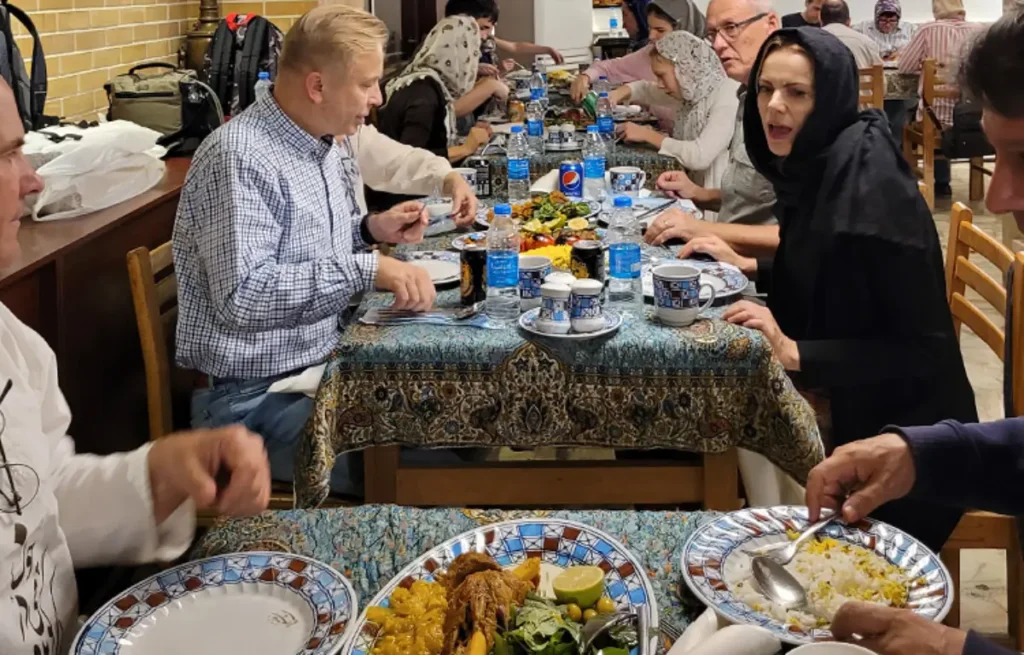
For a truly authentic taste of Persian cuisine, dine at local eateries rather than tourist spots. These restaurants often serve dishes that reflect the rich, traditional flavors of the region and typically offer better prices. Exploring Iranian cuisine provides a delightful and flavorful addition to your travel experience, making each meal an adventure in itself.
10. Having a Flexible Plan
While having a travel itinerary is beneficial, being flexible can greatly enhance your travel experience in Iran. Researching destinations and planning key activities helps make the most of your visit, but be open to changes based on local recommendations or personal discoveries. Iranians are often willing to offer suggestions on must-see places and hidden gems that might not be in your guidebook. Flexibility allows you to adapt to new opportunities and experiences, ensuring that you can fully immerse yourself in the local culture and make the most of your trip.
11. Networking with Locals
One of the most rewarding aspects of traveling in Iran is the opportunity to connect with locals. Iranians are known for their hospitality and friendliness, often going out of their way to assist visitors. Engaging in conversations, accepting invitations for tea or meals, and participating in local customs can greatly enrich your travel experience. These interactions provide deeper insights into Iranian culture and can lead to lasting friendships. However, be mindful of potential sales pitches or overly commercial interactions, and trust your instincts to ensure genuine connections.
Explore Iran like never before with Visit Our Iran’s personalized tours—crafted just for you. Start planning your unique adventure today!
12. Asking Prices Upfront
To avoid unexpected costs, always ask about prices before committing to any purchase or service in Iran. This applies to everything from souvenirs and meals to taxis and tours. Tourist areas may have inflated prices, so it’s advisable to explore local markets for better deals. Effective bargaining is a common practice in markets, and negotiating politely can help secure fair prices. Clear communication about costs prevents misunderstandings and ensures you stay within your budget during your travels.
I recommend you read: A Tourist’s Guide to Shopping in Iran: Tips and What to Expect for detailed insights and practical advice on navigating Iran’s vibrant markets and bazaars. This article will help you understand what to expect when shopping for unique Persian goods, including tips on bargaining, finding authentic products, and making the most of your shopping experience in Iran.
13. Booking Domestic Flights
Booking domestic flights in Iran is often more efficient and straightforward through local travel agents rather than non-Iranian booking platforms. Local travel agencies, such as Visit Our Iran, are well-versed in the nuances of Iran’s flight systems and can offer valuable assistance. By using a local travel agent, you not only bypass language barriers but also gain access to potentially better rates and personalized service. Moreover, domestic flights are particularly advantageous for covering large distances quickly, which can be essential for reaching Iran’s diverse and often remote attractions.
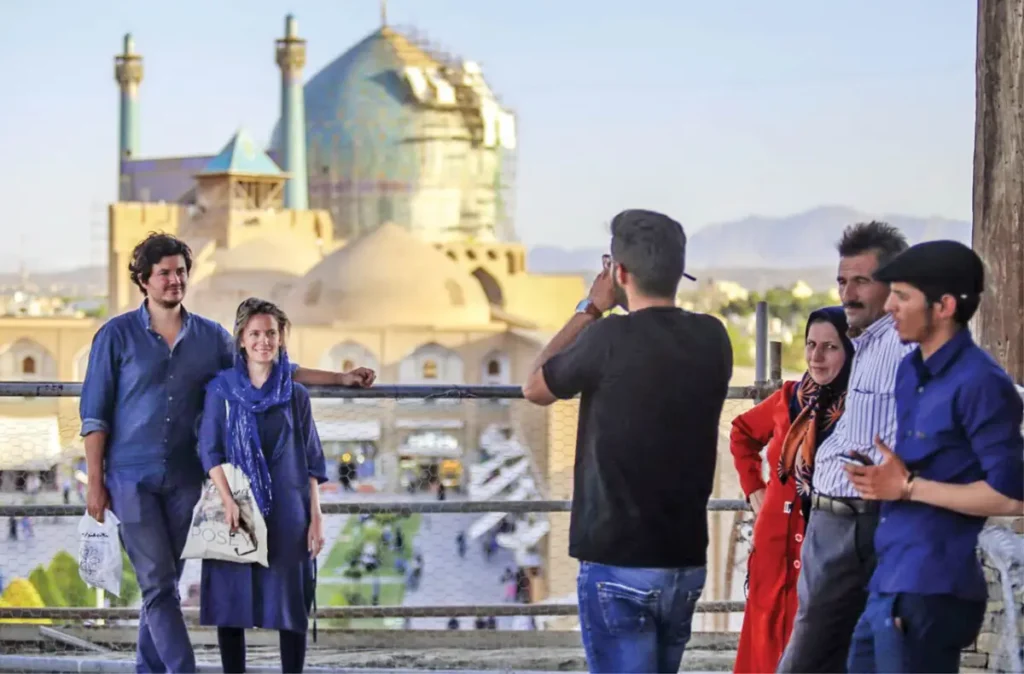
14. Sharing Costs with Other Travelers
Traveling solo or in a small group can be expensive, but sharing costs with other travelers can make it more affordable. This approach is especially useful for private transportation or guided tours. Connecting with fellow travelers at hostels or guesthouses can facilitate arrangements for shared rides or group tours, reducing individual expenses. Shared travel experiences not only cut costs but also offer opportunities for socializing and making new friends.
15. Punctuality Matters
In Iran, punctuality is valued, and being on time for appointments, tours, and transportation is important. Plan to arrive early to avoid missing out, particularly for scheduled tours or public transport. Iranian society operates on a relatively relaxed approach to time, but adhering to punctuality shows respect for others’ time and ensures smoother travel experiences. Allowing extra time for potential delays or traffic can also help in managing your schedule effectively.
16. Embracing Public Transportation
Public transportation in Iran is an efficient way to navigate cities and travel between regions. Buses, subways, and taxis are widely available, with each mode offering different levels of convenience and comfort. The subway system in major cities like Tehran is modern and relatively easy to use, while buses cover a broad network of routes. Taxis, including shared ones known as “savaris,” are also a popular option. Understanding the public transport system can save money and provide a more authentic travel experience compared to private transportation.
17. Emergency Contact Information
Having emergency contact information readily available is crucial while traveling in Iran. This includes local emergency numbers, the contact details of your country’s embassy or consulate, and the addresses of nearby hospitals or medical facilities. For urgent situations, you should be aware of the following local emergency numbers:
Ambulance: 115
Police: 110 (Note: For mobile phones, you can also dial 112 to reach the local police)
Fire & Rescue: 125
Traffic Accident: 197
Knowing these numbers and how to use them in an emergency can make a significant difference in ensuring your safety and quick response to any situation. It’s advisable to have these details stored both digitally on your phone and on paper in case you lose access to your electronic devices. Additionally, keeping the contact information of your country’s embassy or consulate and the nearest medical facilities will provide further support in case of serious emergencies. Being prepared with this information will help you navigate any unexpected situations more effectively during your travels in Iran.
18. Safe Tap Water and Free Drinking Water in Public Areas
In Iran, tap water is generally safe to drink in most urban areas, though it’s always wise to check with locals or your accommodation to ensure its quality in your specific location. In addition, you can often find free drinking water in various public areas, including subway stations and some public parks. These locations typically provide water dispensers where you can refill your bottle. It’s a good idea to carry a reusable water bottle with you to stay hydrated while exploring, especially since access to free water can vary depending on the area and the availability of public amenities.
19. Navigating Bazaars and Markets
Exploring Iranian bazaars and markets is an immersive experience, offering a vibrant atmosphere filled with colors, scents, and sounds. These busy hubs are perfect for discovering local goods, from spices and textiles to handmade crafts and jewelry. Bargaining is a common practice, so engaging in polite negotiation can help you secure better deals. Be prepared for crowds and keep a close eye on your belongings to avoid pickpocketing. The lively environment of bazaars provides a unique glimpse into everyday Iranian life and a chance to interact with local vendors.
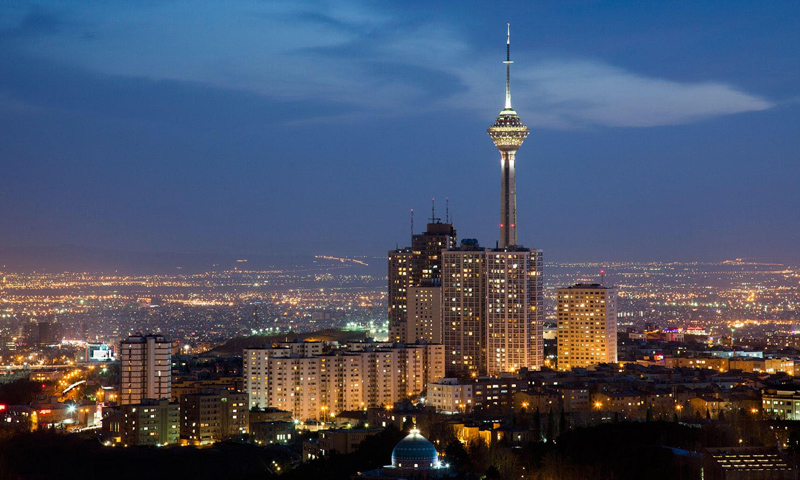
20. Internet Connectivity Considerations and Local SIM Cards
If you choose to use your international mobile device, you’ll need to activate data roaming, which can be expensive. It is recommended to get an Iranian SIM card upon arrival for better connectivity and more affordable rates. Additionally, local SIM cards require phone registration if you stay longer than a month, but for shorter visits, registration is not necessary. Iran’s major mobile operators, such as Hamrah Avval, Irancell, RighTel, Shatel, and Aptel, offer various packages and coverage, so selecting the right one can significantly enhance your travel experience by providing reliable access to navigation, communication, and essential travel information.
While major cities in Iran generally have good internet connectivity, rural areas may have limited access. Planning ahead is crucial if you need to stay connected, especially in remote regions. Downloading offline maps and travel guides can be invaluable when navigating areas with poor internet service.
21. Internet Access and Social Media in Iran
When traveling to Iran, it’s crucial to be aware of the country’s internet restrictions, as they can significantly affect your online experience. While essential services like Google and Gmail generally remain accessible, many popular social media platforms and messaging apps are blocked. For instance, platforms such as Facebook, Instagram, WhatsApp, and Telegram are not available without additional measures.
To circumvent these restrictions and access blocked services, it is necessary to use a VPN (Virtual Private Network). Before traveling, installing a VPN on your phone is highly recommended to ensure you can continue using these apps while in Iran. If you find that your VPN is not working or if you did not set one up beforehand, you can purchase a local VPN service for approximately 10 Euros, which provides access to a server. Additionally, there are free VPN options available, although they may come with limitations in speed or functionality.
Preparing in advance by setting up your VPN will help you maintain access to your preferred social media and communication tools, making your stay in Iran more convenient and connected.
22. Preparing for Unpredictable Situations
Traveling often involves dealing with unexpected situations, such as delays, cancellations, or changes in plans. Being prepared with flexible plans and backup options can alleviate stress. In Iran, locals are generally helpful and understanding, so don’t hesitate to seek assistance if needed. Having a positive attitude and being adaptable can make dealing with unforeseen issues more manageable and contribute to a more enjoyable travel experience.
23. Souvenir Shopping Tips
Iran offers a wide variety of unique souvenirs, including Persian rugs, ceramics, spices, and traditional crafts. When shopping, bargaining is expected, so engaging in polite negotiation can help you secure better prices. Be cautious when purchasing items that might be restricted for export, such as antiques or certain cultural artifacts. Verifying the authenticity of souvenirs ensures you are getting genuine products and supports local artisans. Shopping in markets and bazaars provides a vibrant and authentic experience, offering a glimpse into Iran’s rich craft traditions.
For more insights into shopping and what to bring back from your trip, read our article about top souvenirs to buy from Iran and where to find them.
24. Importance of Travel Insurance
Travel insurance is essential for covering unforeseen events such as medical emergencies, trip cancellations, or lost belongings. Ensure that your insurance policy covers the specific activities and regions you plan to visit in Iran. Review the policy details carefully to understand the coverage limits and exclusions. Travel insurance provides peace of mind and financial protection, allowing you to focus on enjoying your trip without worrying about potential setbacks.
Ensure peace of mind during your trip with Visit Our Iran’s comprehensive travel insurance services. Protect yourself from unexpected events and focus on enjoying your adventure!
25. Understanding Local Etiquette
Local etiquette plays a significant role in ensuring respectful and positive interactions in Iran. For example, removing shoes before entering homes and mosques is a common practice. Addressing elders with formal titles and avoiding sensitive topics like politics or religion in casual conversations can prevent misunderstandings. Familiarizing yourself with these customs and practices helps in navigating social situations smoothly and shows respect for local traditions.
26. Adapting to Local Dining Customs
Dining in Iran is rich with traditions and etiquette that reflect the country’s cultural values. One notable aspect is taarof, a form of polite insistence where hosts may repeatedly offer you more food, such as rice or other dishes, even if you’re already full. This practice underscores their hospitality and desire to ensure you enjoy your meal. Always respect smoking policies and be aware that while tipping is not a widespread practice, it is appreciated. When sharing meals, use the provided serving utensils to transfer food to your plate and make an effort to finish what you’ve taken. Leaving food on your plate might be seen as wasteful, so it’s considered polite to only take as much as you can eat. Adhering to these dining customs not only shows respect but also enhances your overall experience of Iranian hospitality and culture.
27. Choosing the Right Accommodation
Selecting appropriate accommodation is crucial for a comfortable stay in Iran. Options range from traditional guesthouses and hostels to luxury hotels and boutique stays. Traditional Iranian guesthouses offer an authentic experience and the opportunity to engage with local families. When choosing accommodation, consider factors such as location, amenities, and reviews to ensure a pleasant stay. Booking in advance, especially during peak travel seasons, helps secure preferred options and avoid last-minute inconveniences.
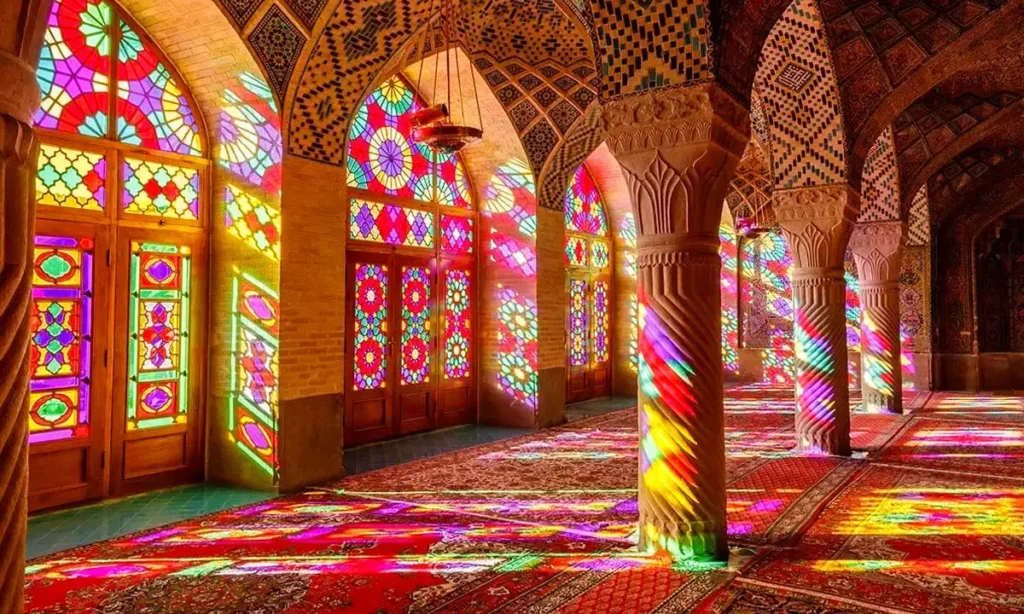
28. Engaging with Iranian Culture
Engaging with Iranian culture enriches your travel experience and fosters a deeper understanding of the country. Participating in local festivals, attending cultural events, and exploring historical sites provides insight into Iran’s heritage and traditions. Learning about Persian art, literature, and music can also enhance your appreciation of Iranian culture. By immersing yourself in local customs and traditions, you create a more meaningful and memorable travel experience.
29. Iranian Tea Culture and Cafés
Here, tea is more than just a beverage; it’s a deeply ingrained part of the culture. Iran is renowned for its high-quality tea, particularly in the northern regions where the lush tea gardens produce some of the finest leaves. While tea reigns supreme, you’ll also find a growing coffee culture in urban areas, with a variety of cafés offering a range of espresso drinks and other coffee specialties. These cafés provide a modern twist to traditional tea-drinking habits, catering to diverse tastes and providing spaces for socializing. Despite the dominance of tea, the presence of coffee shops highlights the dynamic and evolving nature of Iranian culinary preferences.
30. Female-Only Spaces for Comfort and Convenience
In Iran, several public spaces have designated female-only areas to ensure comfort and privacy. On buses, there are usually reserved seats for women, offering a more comfortable travel experience. Similarly, many mosques and metro subways have female-only sections, providing a space for women to pray or travel without concern. These accommodations reflect the country’s effort to respect and address the specific needs of women in public spaces. This arrangement helps make navigating public transport and religious sites more accessible and comfortable for female travelers.
Wrapping Up
Exploring Iran involves much more than visiting historical sites; it’s about engaging with its people, understanding their customs, and adapting to their way of life. Navigating practical aspects such as currency, internet connectivity, and accommodation will further smooth your travel experience. For an enjoyable travel experience, Visit Our Iran offers comprehensive tour services, including SIM cards, domestic flights, hotel bookings, visa assistance, tours, and car rentals. Contact us for personalized assistance with your travel plans.

